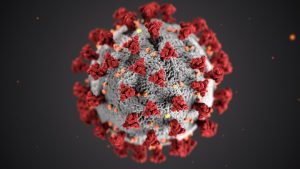Table of Contents
ToggleOmicron BF.7: Cases of highly infectious strain rise in India; experts on symptoms, precautions and fresh wave
Three cases of Omicron BF.7 strain, that is driving the current wave of Covid infections in China, have been detected in India so far. The first case of the highly infectious strain with greater transmissibility was detected in Gujarat earlier in October. With 2 in Gujarat and 1 in Odisha, the number of Omicron BF.7 cases in India now stand at 3. While this hasn’t really created a big panic so far, the new Omicron variant is known to spread very fast and has a shorter incubation period. It has been reported that it will infect 60% of people in China in the coming three months.
Should you be worried about the new coronavirus strain?
There are new strains of the novel coronavirus circulating in the United States – should you be concerned?
“When we talk about strains or mutations, it may sound like the virus is getting worse, bigger or stronger,” says Jayne Morgan, M.D., a cardiologist and clinical director of Piedmont’s COVID-19 task force. “But scientifically, it means the virus has changed. Most of the time, those changes can serve to weaken or slow a virus.”
Corona viruses are a family of viruses that cause diseases like COVID-19. It’s common for them to mutate, becoming new strains. “If you have a strain or mutation of a virus that is more contagious than others, it will quickly become the dominant strain in that particular area,” Dr. Morgan adds. “That’s why we’re seeing certain strains emerging in different areas.”
The particular strain gaining headlines these days was first detected in England in September 2020. However, there are multiple strains all over the world.
“Since we first saw COVID-19 in 2020, we’ve seen 2,500 mutations of the virus,” she says. “It mutates frequently. However, we’ve only traced and identified about 10% of those mutations. We don’t know anything about the vast majority – more than 90% – of all mutations in our environment. Headlines are grabbing the ones we have identified and typed, but the fact is, that’s a small portion of what the rest represent.”
“When we talk about strains or mutations, it may sound like the virus is getting worse, bigger or stronger,” says Jayne Morgan, M.D., a cardiologist and clinical director of Piedmont’s COVID-19 task force. “But scientifically, it means the virus has changed. Most of the time, those changes can serve to weaken or slow a virus.”
Corona viruses are a family of viruses that cause diseases like COVID-19. It’s common for them to mutate, becoming new strains. “If you have a strain or mutation of a virus that is more contagious than others, it will quickly become the dominant strain in that particular area,” Dr. Morgan adds. “That’s why we’re seeing certain strains emerging in different areas.”
The particular strain gaining headlines these days was first detected in England in September 2020. However, there are multiple strains all over the world.
“Since we first saw COVID-19 in 2020, we’ve seen 2,500 mutations of the virus,” she says. “It mutates frequently. However, we’ve only traced and identified about 10% of those mutations. We don’t know anything about the vast majority – more than 90% – of all mutations in our environment. Headlines are grabbing the ones we have identified and typed, but the fact is, that’s a small portion of what the rest represent.”
A more contagious strain of the virus
While the new strain spreading in the U.S. is not necessarily more deadly, it does appear to be more contagious.
“If you come in contact with someone who has this new strain or with the virus on a surface, then you’re more likely to become COVID-19-positive,” she says. “The strain doesn’t change how it impacts your body, but it increases your odds of catching the virus.” Because the new strain is more contagious, the infection rate and mortality rate will likely increase because more people will get infected.
“If you come in contact with someone who has this new strain or with the virus on a surface, then you’re more likely to become COVID-19-positive,” she says. “The strain doesn’t change how it impacts your body, but it increases your odds of catching the virus.” Because the new strain is more contagious, the infection rate and mortality rate will likely increase because more people will get infected.

Are the vaccines effective in preventing the new strains?
“Both the Moderna and Pfizer vaccines did not identify specific strains when enrolling into their clinical trials,” says Dr. Morgan. “Researchers enrolled 30,000 and 40,000 participants regardless of where they lived in the world and what strains they were exposed to.”
Additionally, Pfizer has demonstrated further efficacy against the current circulating strain.
Additionally, Pfizer has demonstrated further efficacy against the current circulating strain.
What can we do to stay safe?
Whether or not you’ve received the vaccine yet, you still need to thoroughly wash your hands, wear a mask and practice social distancing.
Need to make an appointment with a Piedmont physician? Save time, book online.
Need to make an appointment with a Piedmont physician? Save time, book online.
Three cases of Omicron subvariant BF.7, apparently the strain driving China's current surge of covid cases, have been detected in India so far, official sources said on Wednesday. The first case of BF.7 in India was detected in October by Gujarat Biotechnology Research Centre. So far, two cases have been reported from Gujarat while one case has been reported from Odisha, they said.
What Precautions Can Be Taken ?
As Christmas and New Year celebrations are around the corner, it is more crucial than ever to follow Covid-appropriate behavior. Wearing a mask, social distancing and hand sanitization remain the basic steps that can help prevent a possible spread.
Cold, cough and other seasonal illnesses are also common during these months in India. But you should not ignore these symptoms. If you or someone around you experience the above-mentioned symptoms, get a Covid test done immediately and practice self-isolation.
Cold, cough and other seasonal illnesses are also common during these months in India. But you should not ignore these symptoms. If you or someone around you experience the above-mentioned symptoms, get a Covid test done immediately and practice self-isolation.
Post Views: 345




